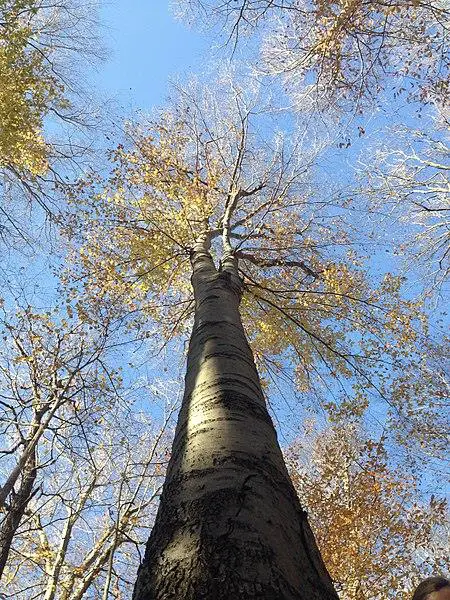The American Hornbeam, also known as blue beech tree, is one of the most versatile trees found in the eastern Americas. Its bark is used to make heavy objects and in ancient times, pioneers used them to make cutlery. It has low maintenance requirements and can adapt to a wide range of soil textures. If you are interested in introducing a new plant to your backyard, then a blue beech tree is your perfect choice for many reasons.
Features of Blue Beech trees
Blue beech trees are known by several names. American Hornbeam, ironwood, muscle beech, musclewood, and water beech are some of its alternately used names. The blue beech tree has several unique features which are mentioned below:
1) Form: A blue beech tree is short, typically averaging around 20 to 35 feet, and has a spread of similar size. Some exceptions have been noted to this observation: the tallest blue beech tree was recorded to be 75 feet tall with 21.6 inches in diameter at the breast. The tree resembles a globe-like shape.
This tree can be found having a single stem or multiple stems. Stems are usually four to five inches in diameter but larger trunks may measure a foot or greater in diameter.
2) Age: The blue beech tree can live up to 75 years in the wilderness before it starts deteriorating. Rare specimens may live beyond 100 years. It is unusual to find trees of such age in urban environments due to the challenges posed by urban planting sites.
3) Wood: The texture of a blue beech stem resembles that of a flexed muscle, hence the alternate name muscle beech. The bark of this tree is smooth, thin, and gray in hue. The wood is dense and rots fast upon the death of the tree. The wood is sturdy, hard, and normally free of splitting and cracking.
Because of its textural qualities, the wood was previously used to make kitchen utensils and hard objects. The wood is diffuse porous which means that the pores are not structured like rings.
4) Leaves and flowers: You can grow this tree either as a large shrub or as a small tree with a huge spread and flat-topped crown. The stem is hairy, slender, and dark brown in color. Leaves of the blue beech tree are deciduous and arranged alternately along the stems. The structure of the leaves varies from oval to elliptical and contains double-serrate edges. They are smooth on the surface, and pubescent underneath on the major veins which may carry visible dark glands.
Leaves are dark green in color during the growing season but transform into orange, red, or yellow in the fall. Flowers of this plant are unisexual in catkins. The male catkins are around 1 to 1 ½ inches in length whereas the female catkins are shorter. Both types can be found on the same plant.
The fruits of this plant are small nuts enclosed by a 3-winged, narrow bract. Multiple nuts are linked closely together in chain-like clusters which change in color from green to brown between September to October.
5)Range: Blue beech tree is native to the regions located east of the Mississippi river in North America. It can also be found in certain parts of Mexico and Central America.
Within these areas, you are most likely going to find these trees in bottomland mixed hardwood forests. Ideal sites are areas that are transitioning between wet and mesic areas such as near lakes and swamps, well-drained river terraces, and coves. Ravine bottoms and rises in lowlands are also good spots. These places have plenty of soil moisture and proper drainage for preventing saturation and poor aeration. Trees may grow on flooded regions for nearly 20% of the growing season.
6) Establishment: The blue beech tree is usually planted in lush landscapes and areas that are naturalized. It grows best in acidic, moist, fertile, and deep soil. Partial shade is ideal for growth, but it can also grow well in a sunny environment.
This tree begins producing seeds at around 15 years of age which are grown for another 25-50 years. The tree dies at around 75 years. Within 3-5 years of intervals, large seed crops are generated. Birds will mainly disperse these seeds. The establishment of seeds happens in a deep shade on leaf litter.
Factors such as drought, flooding, proximity to an adult plant of the same species, damping off, and consumption by herbivores risk seedling growth. Reproduction in these plants may happen by root sprouts and sprouts from the root crown. The former method is not as common as the latter one.
Areas which are ideal for blue beech tree establishment include bottomlands that are already stable due to the presence of another pioneer species. The American Hornbeam tolerates shade and is a vital member of adult plant communities. Tolerance of shade reduces as the plant ages and the plant becomes more dominant at some areas after the overstory is removed.
The main difficulties in cultivating a blue beech tree are issues with transplantation and a comparatively slow rate of growth. These species also cannot tolerate drought.
Benefits of cultivating Blue Beech
Despite the drawbacks, there are several advantages to growing a blue beech tree. The small size of these trees does not allow them to have much economic impact. However, its hard and heavy surface has been used to make tools and objects like levers, tool handles, and mallet heads. Dishes and bowls were popularly made in ancient times due to its non-splitting tendency.
In modern times, this tree is used to make sports equipment, wood flooring, and furniture. Indigenous Americans also used it for medicinal purposes. As a versatile plant, this tree can grow in almost any kind of soil structure. However, it is intolerant of salt and should not be planted near roads that are salted.
This tree is ideal for planting in parks, small gardens, or yards. Its vibrant fall colors add an appealing touch to the surroundings. Though blue beech trees are low in nutrient content, they enrich the soil they grow in. This happens when the trees shed leaves which contain major nutrients like phosphorus and nitrogen which seep into the soil and enrich it.
Further, the buds, catkins, and seeds of this plant serve as food for insects and smaller animals like squirrels, songbirds, turkey, pheasants, and bobwhite. The larger stems, twigs, and leaves are eaten by beavers, cottontails, and white-tailed deer. Beavers use the blue beech for making their habitat as well.
Management issues
The blue beech tree is top-killed or completely killed due to fires that quickly engulf its thin bark. This happens mainly in communities which seldom experience fire. Repeated fires at closely spaced intervals can quickly wipe out the species. Rotting of the wood happens quite rapidly and aging trees naturally disappear within a decade.
While planting a blue beech tree , ensure that you eliminate factors that can cause harm to this plant. Soils that drain or are unsaturated are needed for growing this plant. Make sure that you are allowing the plant to have access to full shade or a fully sunny environment with ample moisture.
How to maintain the tree
As mentioned earlier, a blue beech tree has low maintenance needs. It is perfect when transplanted as a young, container-grown plant. Prior to mulching, you may layer 3 cm of mature compost in a wide ring around the tree if the soil condition is poor.
While planting a blue beech tree, it is crucial to find the right site that would allow it to grow well. The best location is where the tree can grow without interference from other trees. When it grows in an open site, the tree develops an attractive shape with a broadly rounded crown and openly spread branches.
A newly planted blue beech tree requires regular watering during the first two years. Once it has been established, the tree is able to tolerate dry spells but needs additional water during drought. Since it has a shallow and wide root system, the tree should not be cultivated deep in the root zone.
Regular feeding is not necessary for established trees. Changing the soil with compost during planting will boost the fertility level of the soil and nurture a young tree. In its first two years, the tree should be fed during early spring so that it can grow well. A balanced granular formula, comprising of 1 pound of food for nealry every 100 square feet of area, can be provided on the soil located near the root zone of the tree.
Blue beech trees naturally grow up to a tall height with the central trunk growing straight upwards through the crown of the tree. These trees do not require much pruning. However, if two branches are found to rub against each other, one of them should be removed to avoid injury the bark of the tree. Suckers should also be removed since they can make your tree weak. Winter is best suited for pruning the tree when it stays dormant. Early spring, when new leaves are appearing, is also ideal for pruning. Damaged branches should be removed to avoid entry of disease-causing pathogens. Its versatility, multiple uses coupled with the low maintenance needs are some of the reasons that make the blue beech tree the perfect addition to your garden.



